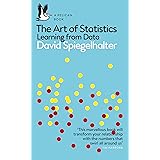Effective Data Presentation: Ultimate Guide to Impactful Visuals
Effective Data Presentation, In today’s data-driven world, the ability to present information clearly and convincingly is more important than ever.
Effective data presentation transforms complex datasets into understandable insights, helping your audience grasp key messages quickly and confidently.
Whether you’re creating reports, dashboards, or presentations, mastering the art of data visualization can elevate your communication skills and enhance decision-making.
This comprehensive guide explores proven strategies for designing compelling data visuals that resonate with your audience, highlight critical points, and tell a powerful story.
1. Choose the Most Suitable Data Visualization Types
Selecting the right chart or graph is fundamental to effective data communication.
Different visualization types serve distinct purposes:
- Bar Charts: Ideal for comparing quantities across categories. Use horizontal or vertical bars to showcase differences clearly.
- Line Graphs: Perfect for illustrating trends and changes over time, making them suitable for time series data.
- Pie Charts: Useful for showing proportions and parts of a whole, especially when categories are few and distinct.
- Scatter Plots: Show relationships and correlations between two variables, helping identify patterns or outliers.
- Heatmaps: Highlight patterns and densities within large datasets, revealing areas of interest or concern.
Tip: Always match your data and message with the most appropriate visualization type.
The right chart makes your insights more accessible and memorable.
2. Tailor Visuals to Your Audience
Understanding your audience is key to effective data storytelling.
Adjust your visuals and messaging according to their expertise and interests:
- Expert Audience: Use detailed data, technical language, and advanced visualizations.
- General Public: Simplify complex data with straightforward visuals and plain language.
- Business Stakeholders: Focus on key metrics, results, and actionable insights.
- Scientific Community: Prioritize accuracy, precise labels, and comprehensive data.
Additionally, consider what your audience cares about most—financial results, social impact, technical accuracy, or personal relevance—and craft your visuals accordingly.
This targeted approach ensures your message resonates and promotes comprehension.
3. Craft a Compelling Data-Driven Story
Data storytelling connects facts to a clear purpose, making your presentation engaging and memorable:
- Define the Core Question or Problem: Clearly articulate what the data aims to address.
- Organize Data Logically: Present information step-by-step, building towards a conclusion.
- Highlight Key Insights: Focus on the most important points that answer the question or solve the problem.
- Use Narratives and Annotations: Guide viewers through your visuals with descriptive titles, annotations, and callouts.
A well-structured story transforms raw data into a narrative that informs, persuades, and motivates action.
4. Leverage Colors and Design Thoughtfully
Design choices significantly impact the clarity and effectiveness of your visuals:
- Use a Limited Color Palette: Select 2-4 harmonious colors to emphasize trends, categories, or comparisons.
- Ensure Readability: Use high-contrast text and background colors for labels and annotations.
- Avoid Clutter: Keep the layout simple, organized, and free of unnecessary elements.
- Maintain Consistency: Use uniform fonts, styles, and colors throughout your visualizations for cohesion.
- Employ Shapes and Lines Strategically: Use simple shapes and clean lines to enhance understanding without distraction.
Remember, well-thought-out design helps communicate your message, not distract from it.
5. Simplify and Clarify Your Data
Cluttered visuals hinder understanding. Focus on clarity by:
- Eliminating Excess Information: Remove irrelevant details that do not support your core message.
- Using Clear Titles and Labels: Make sure labels are descriptive, concise, and easy to read.
- Organizing Data Logically: Present data from general to specific, or in a sequence that makes sense.
- Harnessing White Space: Use spacing effectively to prevent overcrowding and guide focus.
- Avoiding Overuse of Effects: Steer clear of unnecessary 3D effects, shadows, or animations that can distort perception.
Simplification enhances comprehension and ensures your audience leaves with a clear understanding.
6. Create Effective Data Visualizations: Examples and Best Practices
Example of a Strong Visualization:
- Type: Line Chart illustrating sales trends over months
- Features:
- Clear axis labels with readable fonts
- Distinct colors for different data series
- Adequate whitespace and gridlines for readability
- Titles and annotations guiding viewer focus
Example of a Poor Visualization:
- Issues:
- 3D effects distorting data perception
- Unlabeled axes and tiny fonts
- Clashing colors and vertical text
- Lack of gridlines, making comparison difficult
By analyzing these examples, you can learn to craft visuals that effectively tell your story and avoid common pitfalls.
7. Wrapping Up: The Key to Impactful Data Presentation
Effective data presentation hinges on:
- Selecting appropriate chart types aligned with your data and message
- Customizing visuals for your audience’s knowledge level and interests
- Designing with clarity, simplicity, and consistency
- Telling a coherent story that guides viewers through your insights
- Using color and layout strategically to highlight key points
Implementing these principles will help you create visuals that not only inform but also inspire action.
Remember, the goal is to communicate complex data in a way that is accessible, engaging, and memorable.
Start transforming your data today—your audience will thank you for it!
Real Time Data Dashboard in R: Guide »





